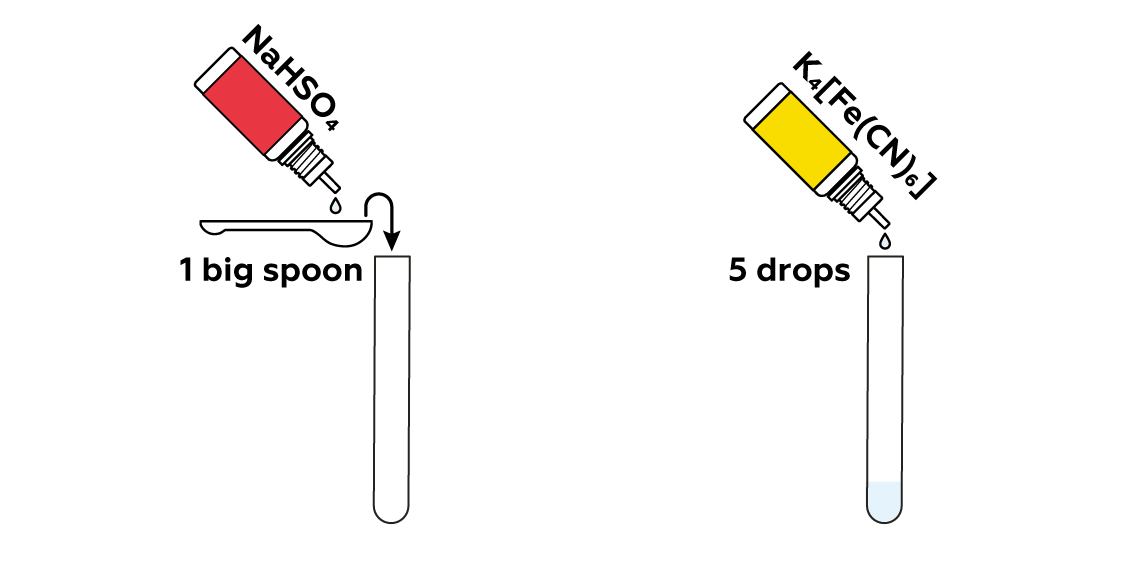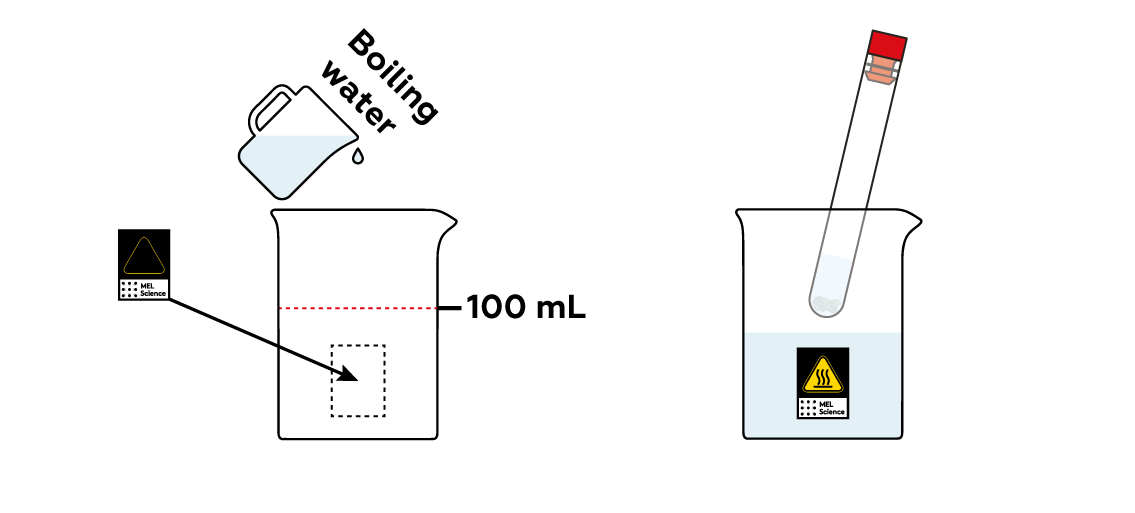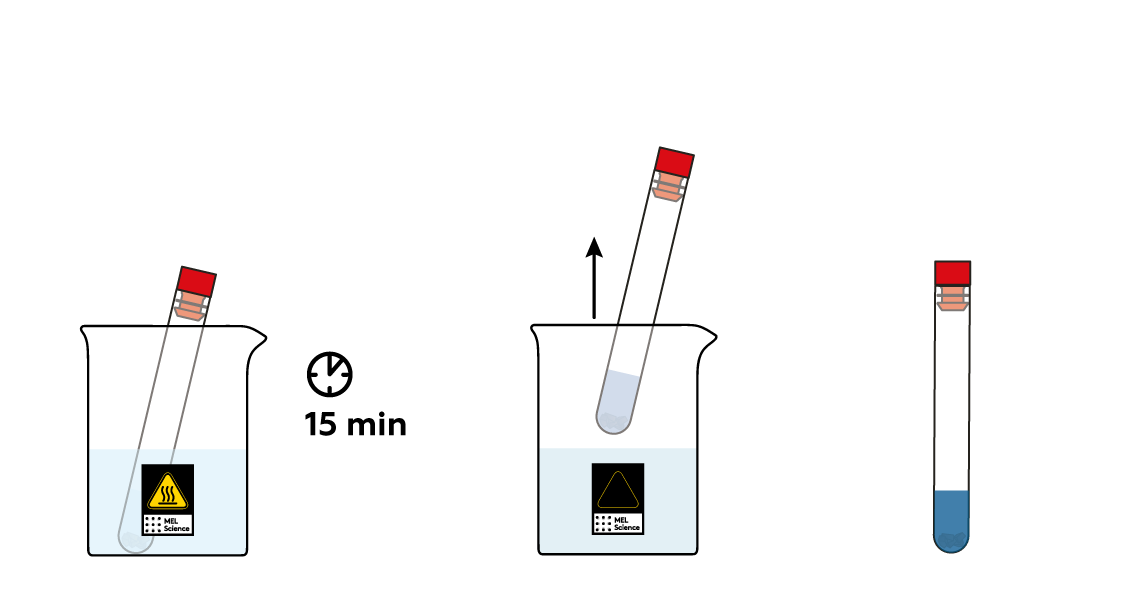Fool's gold
Explore the properties of pyrite!
Reagents
Safety
- Put on protective gloves and eyewear.
- Conduct the experiment on the plastic tray.
- Observe safety precautions when working with boiling water.
- Do not allow chemicals to come into contact with the eyes or mouth.
- Keep young children, animals and those not wearing eye protection away from the experimental area.
- Store this experimental set out of reach of children under 12 years of age.
- Clean all equipment after use.
- Make sure that all containers are fully closed and properly stored after use.
- Ensure that all empty containers are disposed of properly.
- Do not use any equipment which has not been supplied with the set or recommended in the instructions for use.
- Do not replace foodstuffs in original container. Dispose of immediately.
- In case of eye contact: Wash out eye with plenty of water, holding eye open if necessary. Seek immediate medical advice.
- If swallowed: Wash out mouth with water, drink some fresh water. Do not induce vomiting. Seek immediate medical advice.
- In case of inhalation: Remove person to fresh air.
- In case of skin contact and burns: Wash affected area with plenty of water for at least 10 minutes.
- In case of doubt, seek medical advice without delay. Take the chemical and its container with you.
- In case of injury always seek medical advice.
- The incorrect use of chemicals can cause injury and damage to health. Only carry out those experiments which are listed in the instructions.
- This experimental set is for use only by children over 12 years.
- Because children’s abilities vary so much, even within age groups, supervising adults should exercise discretion as to which experiments are suitable and safe for them. The instructions should enable supervisors to assess any experiment to establish its suitability for a particular child.
- The supervising adult should discuss the warnings and safety information with the child or children before commencing the experiments. Particular attention should be paid to the safe handling of acids, alkalis and flammable liquids.
- The area surrounding the experiment should be kept clear of any obstructions and away from the storage of food. It should be well lit and ventilated and close to a water supply. A solid table with a heat resistant top should be provided
- Substances in non-reclosable packaging should be used up (completely) during the course of one experiment, i.e. after opening the package.
FAQ and troubleshooting
In this case, you have two options. First, you can continue the experiment, keeping in mind that the result may differ slightly from what would otherwise happen. Therefore, we recommend that you repeat the experiment a second time, being careful to use the quantities of reagents indicated in the instructions. You can then compare your results! You can also just restart the experiment from the beginning, carefully measuring the necessary amount of reagents.
It is very important that the water you use be boiling hot. Using warm water will not produce a good result. So in this case, pour out the warm water, add 100 mL of boiling water, and immerse the test tube for another 15 minutes.
Ideally, your solution should be blue. Perhaps you added more than 5 drops of potassium hexacyanoferrate(II) solution. This turns the liquid more yellow, and after all, mixing yellow with blue produces green. Try repeating the experiment, carefully adding the necessary quantities of reagents.
Step-by-step instructions
Mix some sodium hydrogen sulfate NaHSO4 and potassium hexacyanoferrate(II) K4[Fe(CN)6] to prepare your test solution.

Add some pyrite FeS2. Your test solution is designed to take the "Fe" part from the FeS2 and make it visible with some help from the oxygen O2 from the air.

FeS2 contains Fe2+ ions. The reaction of the pyrite with the oxygen forces Fe2+ ions into the solution and turns them into Fe3+ ions. Many reactions speed up when heated—this one is no exception.

Now take the test tube out to check the result!

Disposal
Please refer to local regulations when disposing of chemicals. Dispose of other solid waste with household garbage. Pour leftover solutions down the sink. Wash with an excess of water.
Scientific description
Let's figure out what's going on. Our solution contains plenty of dissolved oxygen from the air. NaHSO4 helps it react with FeS2. In this reaction, FeS2 loses Fe2+, which turns into Fe3+ in the process and ventures into the solution. This is where K4[Fe(CN)6] comes in. Its [Fe(CN)6]4- part can bind very strongly to Fe3+ and form an intensely-colored compound known as "Prussian blue."

